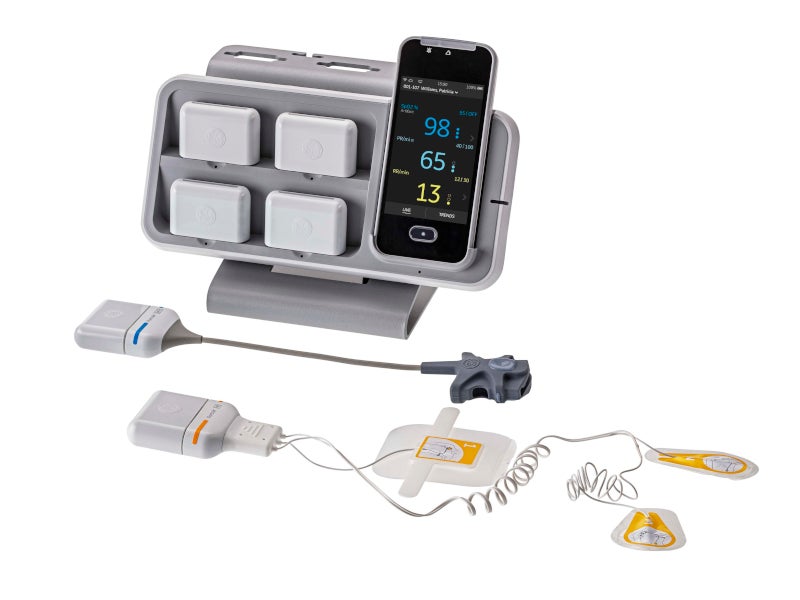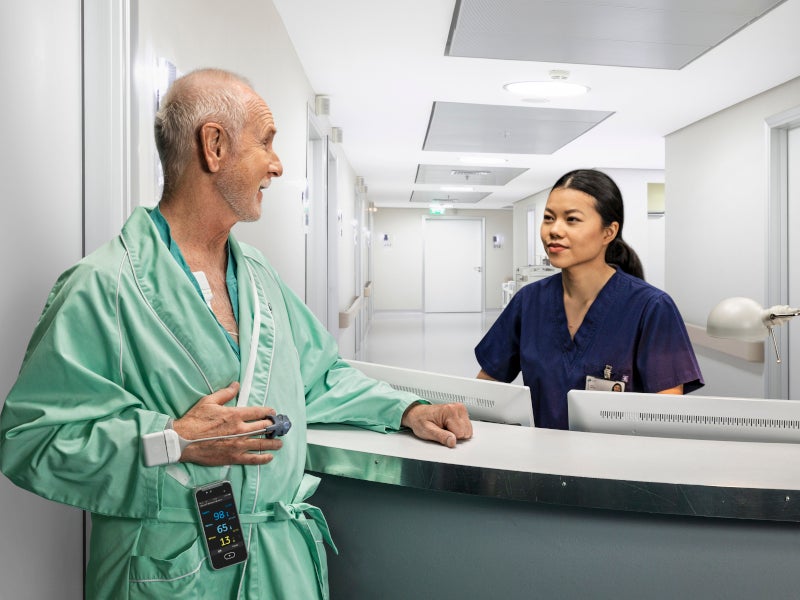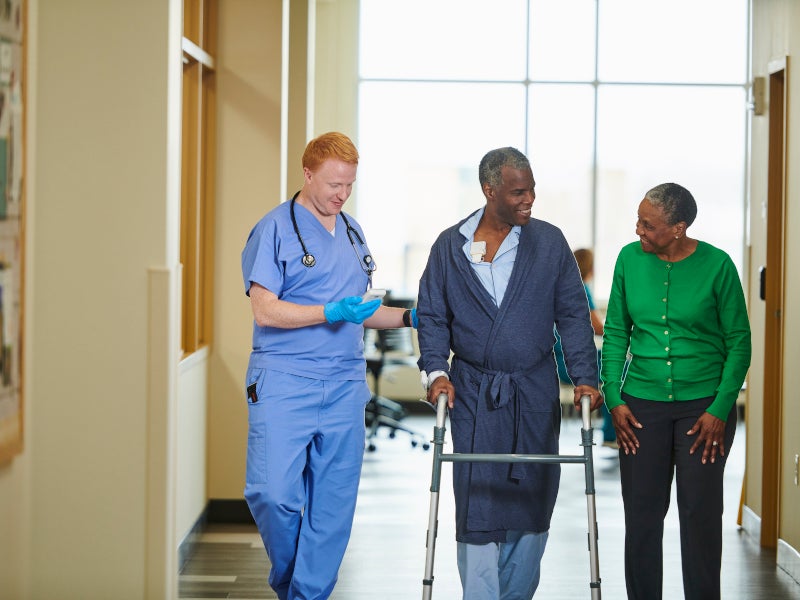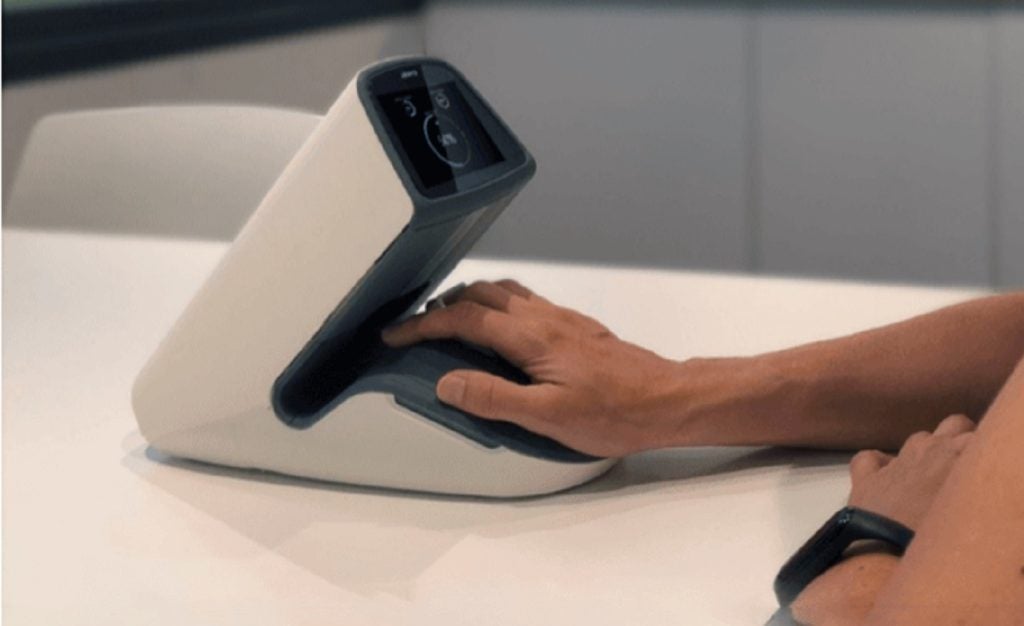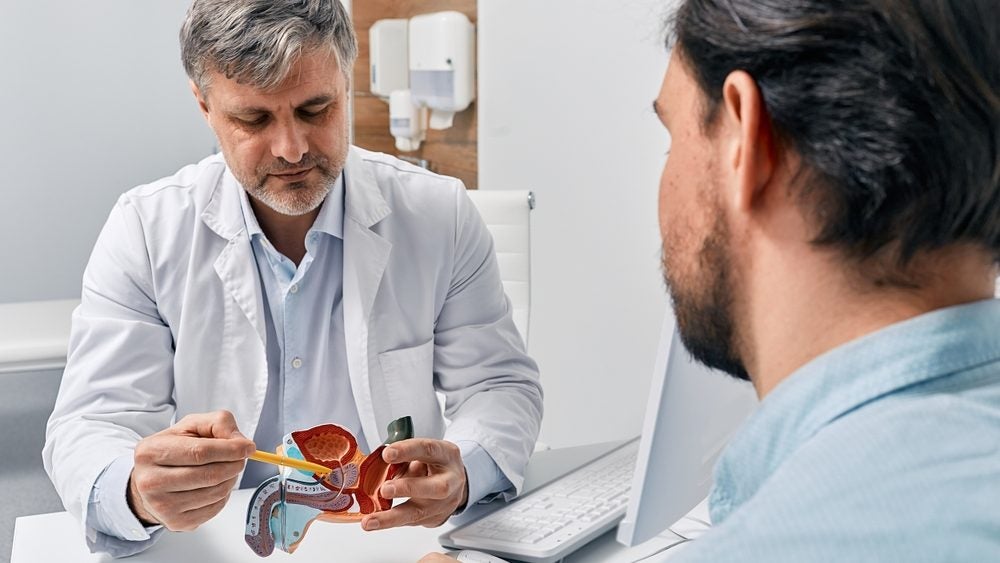Portrait Mobile is a wireless monitoring system developed by GE HealthCare, a medical technology company based in the US. It uses wearable sensors for early detection of inpatient deterioration in healthcare settings.
The device was granted 510(k) clearance by the US Food and Drug Administration in August 2023.
The Portrait Mobile platform enables real-time continuous monitoring of patient vitals such as respiration rate, oxygen saturation, and pulse rate, which are crucial during critical recovery phases, including post-surgery or discharge from the intensive care unit.
In November 2023, GE HealthCare signed an agreement with Masimo, a medical technology company, to integrate the latter’s Signal Extraction Technology pulse oximetry into the Portrait Mobile device. The integration enables clinically proven oxygen saturation (SpO2) measurement.
Portrait Mobile design and specifications
The Portrait Mobile platform comprises the Patient Mobile patient monitor, a wearable TruSignal SpO2 pulse oximetry sensor, a TruSignal wearable dual vector respiration rate sensor and electrode patch, a bedside charging station, sensor batteries, and a clinical alarming unit.
The patient monitor features a 3.7in display, weighs 230g, and has a battery life of up to 16 hours. It has an I.P. rating of X7, a range of 5m from the sensors to the monitor, and has been drop-tested from a height of 1.5m.
The platform is designed for complete in-room mobility, including use in en-suite bathrooms.
Portrait Mobile features and technology details
Portrait Mobile delivers reliable, real-time data from the wearable sensors to the patient monitor through the wireless medical body area network (MBAN) using the innovative Byndr transmission protocol.
The MBAN link is created through nearfield communication touch-pairing.
The wearable sensors can operate in a protected spectrum and unlicensed industrial, scientific, and medical frequency bands.
The system’s adaptive frequency hopping ensures high-quality and continuous data transmission.
Healthcare providers can access real-time patient data through the Portrait Central viewer application, which can be configured on a hospital computer.
The central viewer can display details of 24 patients per display and alarms are configured to be delivered for each patient. Data is synched back to the network if unexpected network dropouts occur.
Portrait Mobile is developed based on GE HealthCare’s Edison HealthLink platform, an advanced edge-computing platform designed to collect, analyse, and process data and evolve based on future clinician monitoring needs.
The platform incorporates cybersecurity measures such as end-to-end encryption and signed software for enhanced security. It can be deployed using existing network infrastructure at hospitals, thereby reducing installation and maintenance costs.
Integration with electronic medical record systems is possible using Integrating Healthcare Enterprise and Health Level-7 standards, which streamline workflows such as patient admissions, discharges, and clinical documentation.
Additional features include ECG artefact rejection for accurate RR detection, frequency, and time-based analysis, and dynamic delays according to the signal quality index.
Portrait Mobile benefits
The Portrait Mobile solution supports hospitals and clinicians to recognise early signs of patient deterioration through continuous monitoring of vital signs, which is more effective than traditional spot-check methods conducted every four to six hours.
The uninterrupted flow of data and continuous measurement of vital signs help healthcare providers detect patient decline in real-time, allowing for timely intervention and freeing patients from the hospital bed with wearable sensors.
The platform increases operational efficiency and enhances care quality and mortality outcomes while reducing costs and hospital stay durations. It also helps prevent critical events such as cardiorespiratory complications or infectious diseases.

